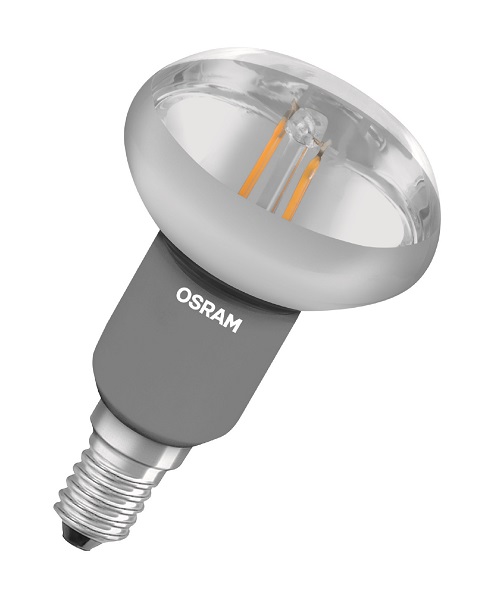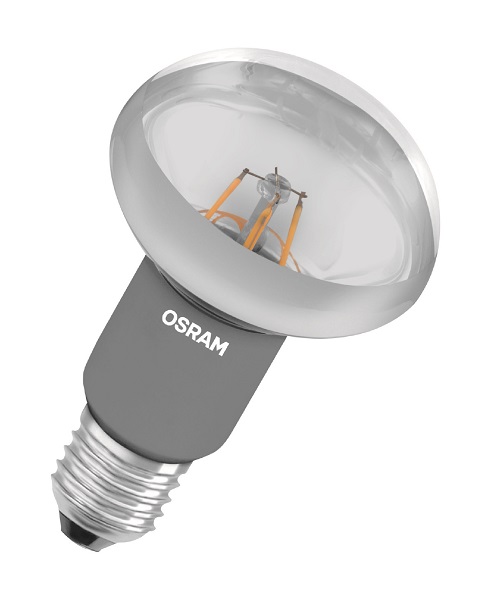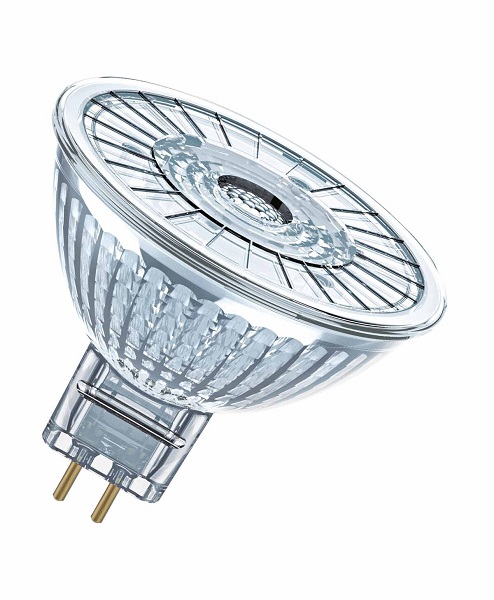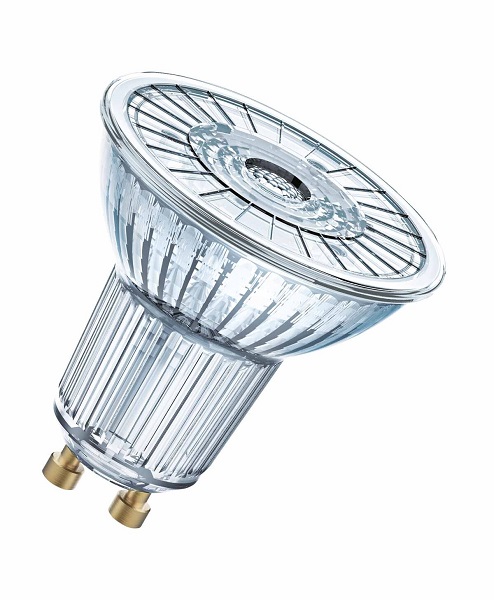Since September 2009, energy consumption-relevant light sources have been disappearing step-by-step from the market. This year it’s the turn of the high voltage reflector tungsten halogen lamps as best-known representatives. These are no longer permitted to be put into circulation in the European Union from 1 September 2016 as part of the third step of Directive (EU) 1194/2012.
Who is affected by the ban?
The regulation initially and mainly affects the lamp producers and dealers because the new ban on incandescent lamps applies exclusively to the initial “putting into circulation” in the common market. This means that people having affected lamps at home need not immediately replace these. However, levels of availability for the high voltage reflector tungsten halogen lamps, as with other affected lamp types, will continuously become less from 1 September 2016. The regulation will therefore become truly noticeable for consumers at the latest when all stocks are sold.
How can I identify affected lamps?
The most popular lamps affected by the directive are the high voltage reflector tungsten halogen lamps. These can be recognized by the following features:
• Reflector lamps emit targeted light to the front in contrast to e.g. omnidirectional distribution pear-shaped lamps.
• Most affected lamps have GU10, E27 or E14 bases.
• The bulbs or casings of the lamps are made of glass.
• High voltage reflector tungsten halogen lamps are used primarily in recessed luminaires, spots and track systems.
• The affected luminaire is operated without a transformer.
Which alternatives are available?
As an alternative, LED reflector lamps can be used. With a luminous element completely of glass, as produced by Ledvance, these look deceptively similar to original halogen lamps and are therefore ideal direct replacements. Replacing the lamps is also highly simple: take out the conventional halogen lamp and fit the economic LED lamp – done! A tip for those who pay attention to their wallet: LED lamps are more expensive to buy than comparable halogen types but pay back thanks to their significantly lower energy costs, and they also have a fundamentally higher rated service life. Certain information must be observed only when combining LED lamps with dimmers.
 |
 |
|
The new LED Star lamps in real glass with PAR16 base (left) and MR16 base (right) are direct replacements for comparable halogen reflector lamps.(All images courtesy of LEDVANCE) |
|
 |
 |
|
Also with screw base: The new LED Star R50 and LED Star R63 (right) from Ledvance. |
|
An overview of the 2016 inefficient light source ban
From 1 September 2016, a good portion of the popular halogen lamps with reflector are no longer permitted to be “put into circulation” in the European Union (EU). As alternatives, energy- and cost-efficient LED lamps from the OSRAM brand can also be used.
Facts and figures: the 2016 ban on inefficient light sources
|
Valuation date
|
1 September 2016
|
|
Basis
|
Directive (EU) 1194/2012
|
|
Ban on “putting into circulation”
|
The initial non-gratuitous or gratuitous provision of the products on the common market for distribution or use within the European community is prohibited. Products put into circulation before 1 September 2016 (e.g. already stocked by dealers) may continue to be sold, handled, purchased and used in the EU.
|
|
Affected products
|
• High voltage reflector tungsten halogen lamps
• Halogen 12 volt reflectors with less than 4,000 hours of service life and an energy class poorer than C.
|
|
Characteristics of affected lamps
|
• Reflector lamps emit targeted light to the front in contrast to omnidirectional distribution pear-shaped lamps.
• Applications: Frequently in recessed luminaires, spotlights and track systems
• The bulbs or casings of the lamps are made of glass.
• Most of the affected lamps have a GU10, E27, E24
|

base.
The lamps require no transformer.
|
Alternatives
|
Simple replacement with energy-efficient LED retrofit lamps with bulbs or casings made of glass.
|
|
Advantages of LED spots
|
Service life to 40,000 hours – corresponding to maximum of 40 years with average annual use of 1,000 hours.
|
|
|
Energy savings up to 85 percent compared to conventional high voltage tungsten halogen lamps.
|
|
|
Various light colors
|
Dimming LED lamps
Lamps that generate light with the aid of light emitting diodes (LEDs) are not always compatible with dimmers. Whether an LED lamp is fundamentally dimmable or non-dimmable must be specified on the packaging. But dimmable versions may also cause problems, mostly in combination with already installed brightness controllers for traditional lamps. This is on the one hand due to the electronics, and on the other due to the low wattages of the LED lamps that place special demands on a dimmer. Those considering the following information when selecting a dimmable solution can however also achieve the desired lighting results with modern, energy-saving lamps.
Energy- and cost-efficient Osram-brand LED reflector lamps are a very good alternative to the high voltage reflector tungsten halogen lamps that from 1 September 2016 are no longer permitted to be “put into circulation” as part of the ban on inefficient light sources in the European Union (EU). Halogen lamps are more energy-efficient than incandescent lamps but in principle have very similar constructions: if the light switch is pressed, current flows through the wire in the lamp which then heats up to generate heat and light. Controlling the brightness is therefore relatively simple: a suitable dimmer ensures that less current flows through the wire which heats up less so that the lamp emits less illumination.
LEDs (light emitting diodes) are constructed in a completely different way – they are electronic semiconductors. This is why LED lamps feature electronics, comparable to a small computer, which are switched upstream from the LED to control type-conform, constant current supply among other functions. These complex electronic characteristics of the LED lamp must be taken into account when specifying the dimmer.
A further challenge for some dimmers are the low wattages of LED lamps. Earlier dimmers were designed for incandescent lamps. These are usually reduced to the desired brightness via a rotary switch installed on the wall. An LED lamp comparable with a 60 watt incandescent lamp for example requires much less installed load – only around nine watts – for the same brightness, and therefore has significantly less margin for light control. For this reason it requires a dimmer capable of mastering this challenge. If it cannot achieve this the lamp may flicker or generate noise, or in worst cases destroy itself or the dimmer.
Before replacing a tungsten halogen lamp by an LED lamp in a dimmable luminaire, the following information should therefore be noted:
- Only operate LED lamps on dimmers where “dimmable” is explicitly specified on their packaging.
- The dimmer used must be suitable for the specific LED lamp. Information about dimmers compatible with the lamp is specified on the websites of the lamp producers, for example at www.Ledvance.com/dim.
- The websites of dimmer producers (e.g. Merten, Gira and Jung) also provide compatibility lists or helpful online tools. If uncertainty exists about already installed dimmers, consulting the building owner or an electrician is recommended.
- Keep away from cheap light control systems and LED lamps often featured in online offers. The quality of such apparently “low-cost” providers is often inadequate and results in poor performance and failures.
- Only use lamps of the same type within a dimmer circuit if not otherwise specified by the manufacturer of the dimmer – problems may occur as caused by the different LED designs of the lamp producers.
- A dimmer should be used if the brightness is reduced once in a while. If however continuously less light is required, a lamp with a lower wattage is the right choice. The reason for this is that continuously dimming a higher-output lamp requires more energy than using a lamp with lower rated power.















